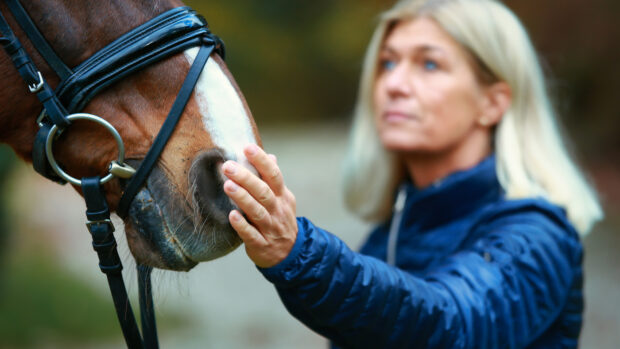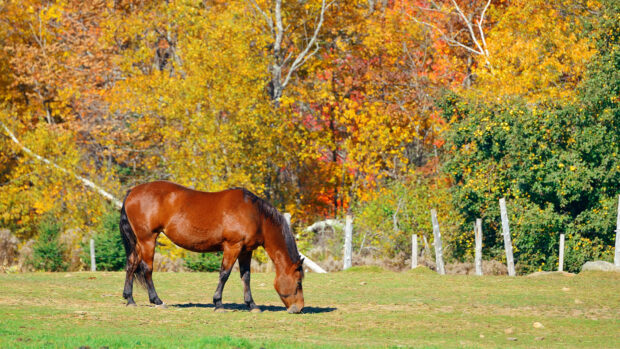Advertisement Feature
When it comes to survival tactics almost all animals, including humans, are made up of a mixture of fight or flight. In the horse, the overriding reaction to danger is “flight” – turn and run first, and ask questions later. This is part of what makes them such natural athletes, but is not always conducive to a calm, focused horse ready to do anything that we, as owners and riders, ask of them.
So how can we help turn the “flight” reaction into a positive?
The extent of the “flight” reaction will vary between individual horses, and there are various reasons for that. Some breeds are known to be flighty and “hot” breeds, such as the thoroughbred and Arab.
Equally age plays a part, with younger horses typically being more anxious. But every horse should be assessed as an individual — we’ve all met the chilled five-year-old thoroughbred and the stressed veteran.
So what can cause the “flight” reaction?
There are many situations that might cause stress and anxiety for the domesticated horse. For some it will be a new experience like being backed or moving to a new yard that triggers that panic flight response. For others, it may be challenges like a farrier’s visit, the dentist, being loaded or attending a show. For horses that are generally anxious it may be simply day-to-day life, such as hacking down the road or working in the school.
So what can we do to help our horses cope with the stresses and demands of the modern equine life?
Ruling out a physical cause
Before we consider using any kind of calmer, or tackling unwanted behaviour at all, we should rule out any physical cause first. If the horse is in pain the natural response is flight, so a reaction to pain may appear very similar to a reaction to fear. The horse’s teeth and back, and the fit of the saddle should be assessed by qualified professionals to ensure that the horse is being asked to work in comfort.
Secondly, don’t forget gastrointestinal comfort. Gastric stress in horses is now well recognised, especially in performance horses that work hard and travel regularly. If the behavioural issues include being hyper-reactive to the leg, discomfort during girthing, being cold-backed or behaviour such as box walking, then a calm outlook may be best achieved through a settled gut. This, in turn, should be realised by a high fibre, low cereal diet, supported with appropriate targeted nutritional support.
The use of calmers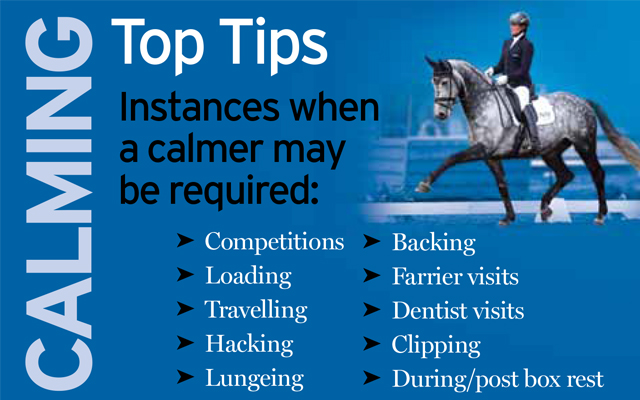 Once all physical issues have been ruled out, some horses and ponies remain anxious, either all the time or in specific circumstances. In these situations it is not unusual for owners or trainers to use a nutritional calmer. Anecdotal evidence is strong for calmers, from leisure riders up to Olympic athletes, but is there any real evidence that they can help keep the horse calm and focused? The answer is yes. Although scientific evidence in horses is limited, it is growing, and when considered alongside evidence from other species, there is a clear argument in favour of calmers in the right circumstances.
Once all physical issues have been ruled out, some horses and ponies remain anxious, either all the time or in specific circumstances. In these situations it is not unusual for owners or trainers to use a nutritional calmer. Anecdotal evidence is strong for calmers, from leisure riders up to Olympic athletes, but is there any real evidence that they can help keep the horse calm and focused? The answer is yes. Although scientific evidence in horses is limited, it is growing, and when considered alongside evidence from other species, there is a clear argument in favour of calmers in the right circumstances.
Magnesium is a popular choice in equine calmers, but there are many discussions regarding the efficacy of the ingredient. It has long been linked with supporting a calm outlook, with evidence in other species including humans, but little has been known of magnesium’s true role in equine behaviour – until now. Earlier this year, research carried out in Australia was published showing that providing magnesium over the daily requirement supports the horse in moderating his natural flight response. However, nothing works alone in nature and we must not underestimate the importance of additional herbs in creating an effective formula to deliver a calm, focused horse.
So what research and development is being undertaken?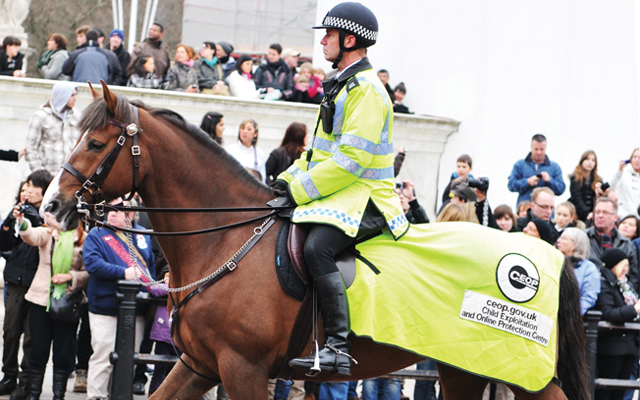 ONE area in which horses are required to remain calm in the face of enormous challenges is the life of a police horse. These horses must not only be totally trustworthy in the heaviest of traffic, but also able to calmly control a boisterous football crowd or cope with missiles, sirens and general chaos in the case of civil unrest – all without hurting themselves, their rider or members of the public.
ONE area in which horses are required to remain calm in the face of enormous challenges is the life of a police horse. These horses must not only be totally trustworthy in the heaviest of traffic, but also able to calmly control a boisterous football crowd or cope with missiles, sirens and general chaos in the case of civil unrest – all without hurting themselves, their rider or members of the public.
So it’s no surprise that their training is rigorous and includes exposure to situations and objects that most horses would never come across.
In 2007 an undergraduate dissertation at Myerscough College investigated whether the addition of a magnesium and herbal complex powder calmer could help police horses remain calm as they faced these challenges. The trial was run as a double blind placebo controlled crossover trial — the horses’ heart rates were taken initially without any supplement, to establish a baseline, and then again on both the active and placebo. During the assessment the horses faced many different stimuli including flags, banners on the floor, large balls being kicked around, bells and the sound of breaking glass. Any one of these is likely to elicit a panic response in most horses, let alone many of them at the same time.
The results showed that the heart rate, accepted as a measure of calmness, was significantly different (p<0.05) throughout the training sessions, with the calmer supplement keeping heart rate lower in the face of adversity. The conclusion of the trial was that, alongside good management and diet, the use of a calmer may provide horses with the best chance to perform to their maximum individual potential.
A further study in 2013, this time at the Royal Agricultural University in Cirencester, showed the same positive heart rate result when trialling leisure horses faced with the challenge of road signs positioned in a riding school, where they were unaccustomed to seeing them. This time a liquid calming solution and an instant use calmer were used. The heart rate data showed that both products allowed the horses to remain calm, with the instant use product eliciting a stronger result than the liquid, as we might reasonably expect.
Calmers in performance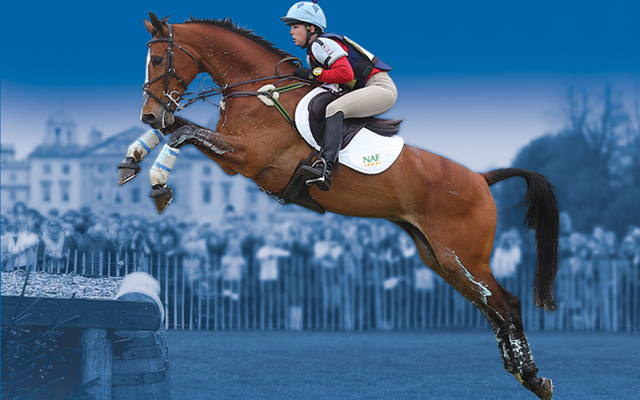 Science supports the use of calmers in horses, and we now see them used widely, from use during backing youngsters right up to supporting focused performance in competition horses. However there is the question of whether a calmer is appropriate for performance, as total relaxation could lead to slower reaction times and cause the horse to lose focus. The key question is whether we are looking at something that supports a calm outlook, or actually sedates the horse. Sedation should certainly be avoided for performance, as not only is the horse likely to perform below his best, it may pose a health and safety concern. So nutritional products known to sedate, the best known being Valerian, should be avoided and are rightly banned by the FEI.
Science supports the use of calmers in horses, and we now see them used widely, from use during backing youngsters right up to supporting focused performance in competition horses. However there is the question of whether a calmer is appropriate for performance, as total relaxation could lead to slower reaction times and cause the horse to lose focus. The key question is whether we are looking at something that supports a calm outlook, or actually sedates the horse. Sedation should certainly be avoided for performance, as not only is the horse likely to perform below his best, it may pose a health and safety concern. So nutritional products known to sedate, the best known being Valerian, should be avoided and are rightly banned by the FEI.
The right nutritional blend, designed to maintain calmness and focus the natural flight response into the maximum athletic potential can be a useful part of the overall management of the performance horse. Equally, the daily addition of a nutritional calmer can simply let a naturally nervous horse enjoy a quiet hack down the road.
If you require any more information or advice about feeding or supplementing for these or any other conditions, please call NAF on their free nutritional helpline
Telephone: 0800 373106
Email: info@naf-uk.com who will be pleased to help
Visit their website: www.naf-equine.eu/uk/
References:
Lockwood A (2013) A study into the effects of commercial equine calming supplements. RAU, Cirencester.
Lucas S (2007) Investigation of a calming supplement on the behaviour and physiology of Police Horses. Myerscough College.

